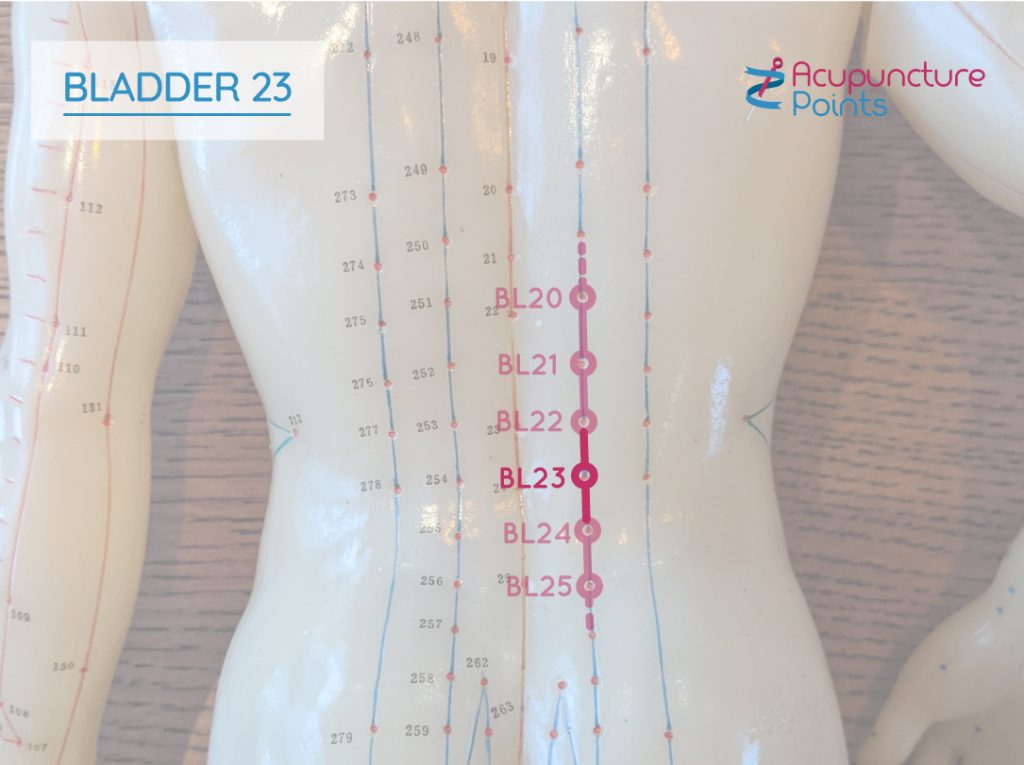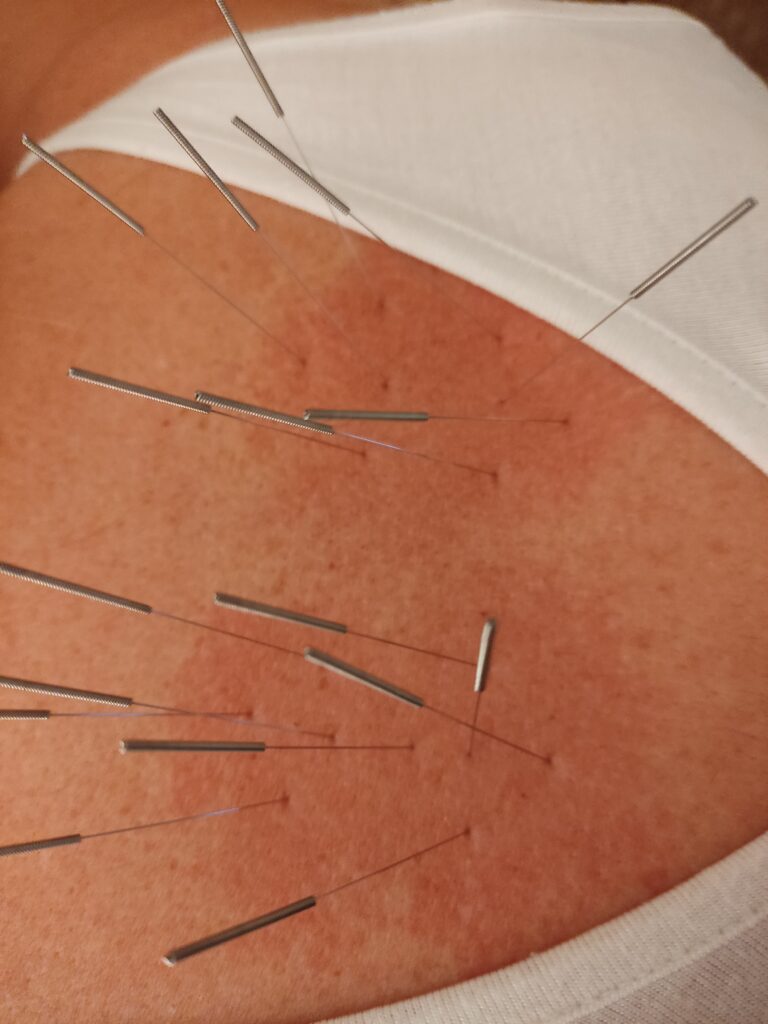
Nervous Stomach Anxiety: yin/yang explanation
Why You get Nervous Stomach Anxiety and How to Handle It. Acupuncture has great ways to help.

What are these ‘Correspondence or Back Shu points’?
These are important acupuncture points on your back. They all lie on the Bladder acupuncture channel which runs parallel with and on either side of your spine.
(By the way, this may be a bit technical for non-acupuncturists, but whenever someone massages or rubs your back, they are nearly always unconsciously treating one or more of these points!)
The image above shows where an important back shu point is – Bladder 23.
They aren’t recognised by Western Medicine.
In using them, the points –
| BL-13 | Lung | Feishu | BL-28 | Bladder | Pangguangshu |
| BL-25 | L. Intestine | Dachangshu | BL-23 | Kidney | Shenshu |
| BL-21 | Stomach | Weishu | BL-14 | Pericardium | Jueyinshu |
| BL-20 | Spleen | Pishu 2 | BL-22 | Sanjiao | Sanjiaoshu |
| BL-15 | Heart | Xinshu | BL-19 | Gall Bladder | Danshu |
| BL-27 | S. Intestine | Xiaochangshu | BL-18 | Liver | Ganshu |
More often they are used to clear excess than to tonify deficiency.
For instance, someone catching a cold or fever, (in Chinese medicine this might be an invasion of ‘Wind-Cold‘ or ‘Wind-Heat‘), might receive a form of cupping called ‘sliding cupping’.
Sliding cupping on these Correspondence points is done by applying a lubricant such as a light oil, then the cups, and slowly sliding them up and down the back over the particular points for Wind-Cold or Wind-Heat until the skin becomes congested, and its colour goes purple.
The effect is to clear the pathogenic factor (wind-cold or wind-heat), accelerate the general metabolism and assist waste and toxin elimination.
These correspondence points excel in clearing heat. Some acupuncturists use them specifically for this purpose, inserting the needles only just into the skin, and watching as, when inserted into the correct correspondence points, a general erythema (skin redness) develops around the base of the needles.

Indeed, the appearance of this redness may confirm a diagnosis. (Note that this explanation isn’t quite complete as there are several other steps to take to be sure. Read our page on Aggressive energy for more on this.)
Equally, when a point is used to treat its related zang or fu organ there can be a swift resolution of disharmony.
For example, Bladder 18, the Correspondence point of the Liver, is a major point for balancing an overburdened Liver organ.
However, to some extent it also calms Liver Qi stagnation, for example, so can be used to support other treatment aimed at that.
Sometimes when Qi has moved out of place, perhaps tending to ascend too much because of deficiency below, Correspondence points on the dorsal area can be used to send Qi downwards, and points on the lumbar area can be used to hold it down.
Where an organ is under-performing, some acupuncturists use the related Correspondence point to tonify or regulate it.
Some back shu points also have other important functions. For example, Bladder 23, the Kidney back shu point, is often used to strengthen the lumbar area and to fortify Kidney functions such as Kidney Yin, Kidney qi and Kidney Yang.
Now read about something similar, the Acupuncture Alarm points.
Get back from Back Shu points to Acupuncture Point Categories.

Stay in Touch!
No spam, only notifications about new articles and updates.

Book a Video consultation if you want to know more about your symptoms

Why You get Nervous Stomach Anxiety and How to Handle It. Acupuncture has great ways to help.
Subscribe to the Newsletter
If you are interested in understanding how Traditional Chinese Medicine can improve your life sign up to my newsletter for the latest updates.
Subscribe to the Newsletter
If you are interested in understanding how Traditional Chinese Medicine can improve your life sign up to my newsletter for the latest updates.